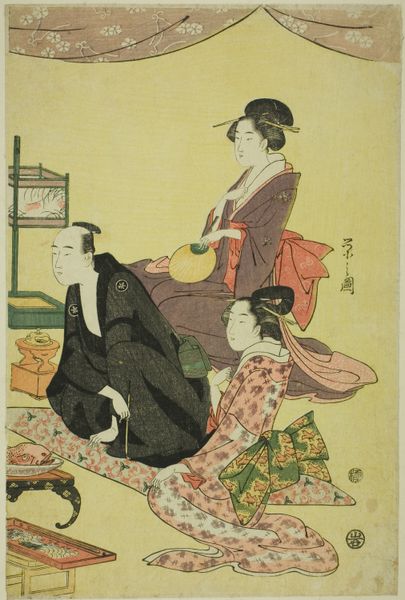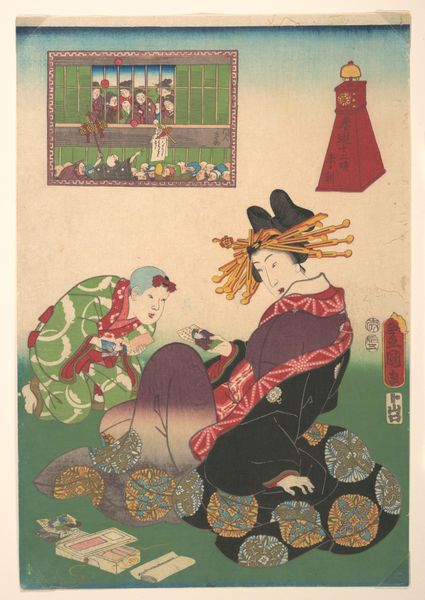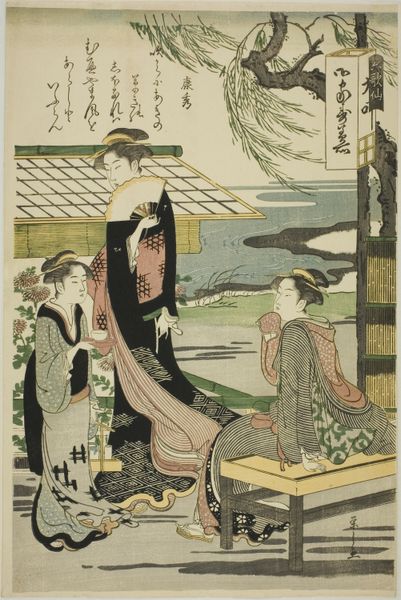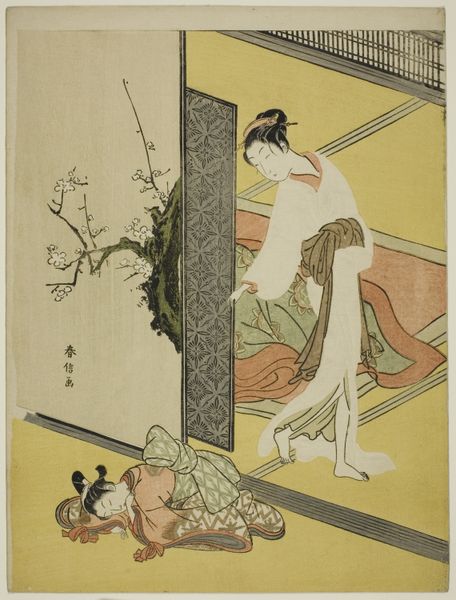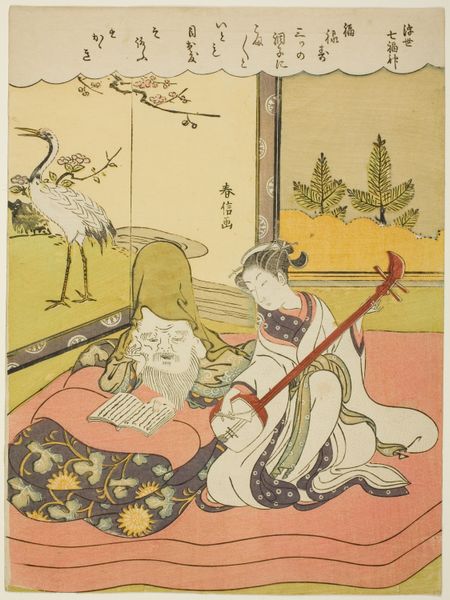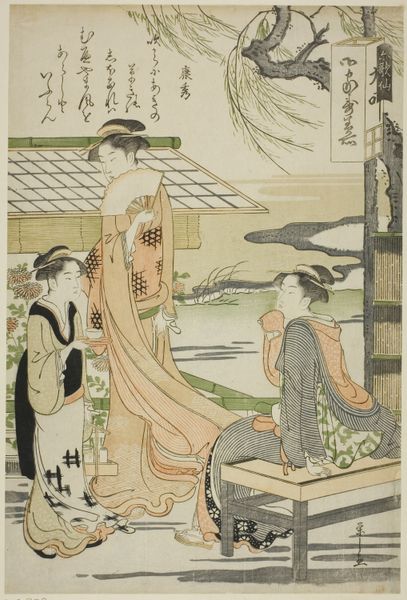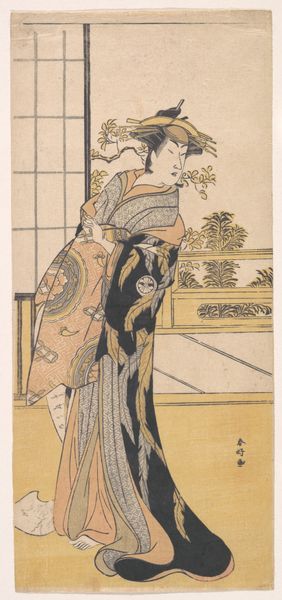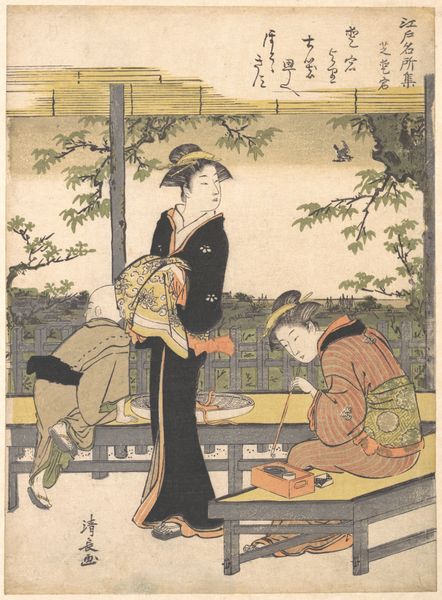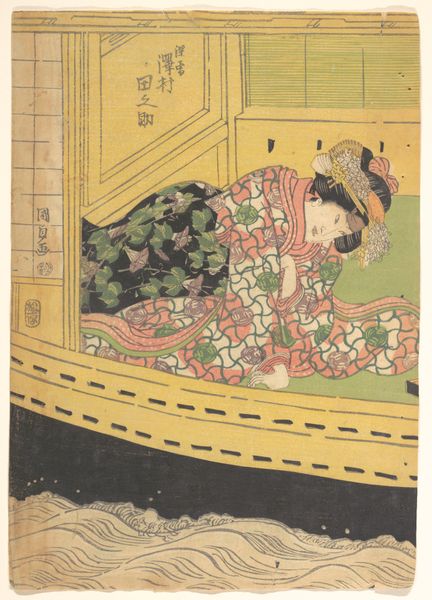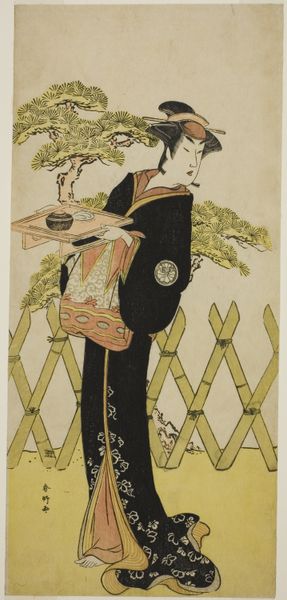
print, woodblock-print
#
narrative-art
# print
#
asian-art
#
ukiyo-e
#
figuration
#
woodblock-print
Dimensions: 10 1/8 × 7 1/2 in.
Copyright: Public Domain
Curator: Komai Yoshinobu created this fascinating woodblock print, titled "Dreaming of the Heron Maiden," around 1771. It’s part of the ukiyo-e tradition and can be found here at the Art Institute of Chicago. Editor: Immediately, I'm struck by the sense of introspection. The subdued colors and the contemplative pose of the central figure create a very private, almost melancholic mood. And then there’s the visual "bubble" floating above... Curator: Yes, that’s precisely what makes it so compelling. Ukiyo-e prints, often depicting scenes of daily life or courtesans, were popular among the emerging merchant class. Yoshinobu, however, ventures into something more psychologically complex here. Note that the dream world exists inside the home in combination with the outside as shown through the painted wall design. Editor: Absolutely. The Heron Maiden herself is a powerful symbol. In Japanese folklore, transformation myths abound, often representing shifting social identities or the blurred lines between the human and spirit world. What might Yoshinobu be suggesting here about societal roles, or perhaps repressed desires? Curator: Considering the era, we have to acknowledge the censorship policies that constrained artists, including Yoshinobu. Ukiyo-e often served as a medium for coded messaging and critiques. I’m fascinated by how this piece could subtly challenge rigid societal expectations, especially for women. And how class tensions shape these personal stories. Editor: It's also a beautifully composed print. The geometric patterns of the room create a sense of order, while the scattered papers hint at the disruption or chaos of the dream itself. The Peony image seems to create a visual parallel with the central image, representing feminine beauty but possibly fertility in an allegorical fashion. Curator: I agree. These kinds of cultural objects highlight how artwork is so much more than pretty decor. Art, especially pieces like these, carry all this cultural baggage in their form and imagery. It can almost act as evidence of those particular human dynamics at certain points in history. Editor: A journey into the personal sphere, reflecting broader societal anxieties and perhaps aspirations of the time. Well, Yoshinobu certainly invites the viewer to look inward along with the maiden! Curator: Exactly, I find myself more deeply engaged each time I visit this piece, reflecting on the ways the art from the era provides a looking glass into those social dynamics.
Comments
No comments
Be the first to comment and join the conversation on the ultimate creative platform.

